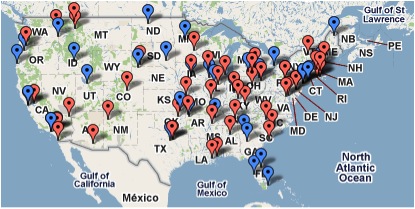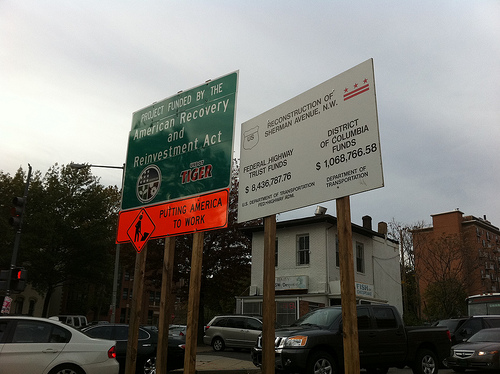Transportation Secretary Ray LaHood likes to remind critics that there have been no reports of “boondoggles” or “sweetheart deals” related to transportation stimulus funds. He’s proud that the money has been put to the uses it was intended for.

Two GAO reports being released today largely bolster LaHood's claims that the funding was allocated based on merit and according to published criteria. But the GAO points out a few places where DOT transparency could have been better, and House Transportation Committee Republicans have pounced.
“President Obama promised the American people that his administration would be the picture of transparency and openness, but reality betrays his rhetoric,” said Railroads Subcommittee Chair Bill Shuster (R-PA).
Full Committee Chair John Mica (R-FL) added, “The rationale for the Administration’s awards of billions of dollars under a failed high-speed rail program remains shrouded in mystery.”
But a closer examination of the GAO reports – one on the high-speed rail grants [PDF] and one on TIGER [PDF] – reveals a much softer nudge toward better documentation, not an all-out condemnation of administration record-keeping. Indeed, the title of the TIGER study, “Competitive Grant Programs Could Benefit from Increased Performance Focus and Better Documentation of Key Decisions,” highlights the advantages of programs like TIGER in allocating funds based on merit – a method the GAO has long advocated.
However, TIGER funds were not based exclusively on merit – the DOT did put some emphasis on making sure the money was distributed relatively evenly to all geographic regions. That was one reason for some of the documentation problems: the GAO report points out that of the 51 projects eventually selected for grants, only 26 of them were “highly recommended” by the evaluation teams. The final review team didn’t adequately explain why they picked some of the “recommended” projects over “highly recommended” ones.

But the GAO found that “because the Review Team was responsible for considering a wider range of factors than the Evaluation Teams, it is not unreasonable to expect that the Review Team’s deliberations could produce a different result.” Those factors included shovel-readiness, accuracy of information, cost-benefit analysis, and equitable geographic distribution. GAO doesn’t dispute the validity of those decisions but would have liked to see more thorough documentation of why they chose some of the previously lower-ranked projects over higher ones. Draft minutes of meetings shed some light on the decisions but were never published.
Significantly, the GAO reported that there are “no requirements for federal programs to externally communicate the reasons for their selection decisions and federal agencies rarely publicly disclose the reasons for their selection decisions.” However, it says that since TIGER follows a “new approach to funding projects on a competitive basis across many modes of transportation” and the administration is hoping to continue the program, more documentation could be helpful and shield the department from “criticism that projects were selected for reasons other than merit.”
Far from accusing the department of misallocating funds, the GAO pointed out:
TIGER was a new program for DOT, and the Recovery Act set short time frames for establishing and administering the program. DOT met these deadlines and developed a sound set of criteria to evaluate the merits of applications and select grants that would meet the goals of the program. Furthermore, it maintained good documentation of the criteria-based evaluation conducted by its Evaluation Teams in the technical review and effectively communicated information about its criteria to applicants—an important step in promoting competition and fairness. By thoroughly documenting how its technical teams considered and applied the criteria, clearly communicating selection criteria to applicants, and publicly disclosing some information on the attributes of the projects that were selected, DOT took important steps to build the framework for future competitive programs and its institutional capacity to administer them.
As for high-speed rail, the GAO found that while the Federal Railroad Administration documented its rationales for project selection, the rationales were too vague, sometimes just restating selection criteria listed in the funding announcement. The GAO said the FRA later provided more detailed reasons and that some of the information was kept under wraps out of concern that releasing reviewers’ names and scoring could discourage them from participating in the future.
The GAO singled out the agency for praise:
FRA also substantially followed recommended practices when awarding grants, including communicating key information to applicants prior to the competition, planning for the competition, using a merit review panel with certain characteristics, assessing whether applicants were likely to be able to account for grant funds, notifying applicants of awards decisions, and documenting the rationale for awards decisions (albeit generally)… Only one of the programs GAO examined communicated more outcome information on technical scores and comments.
So much for committee leaders’ claims that the evaluation mechanisms were “shrouded in mystery” or “lacked transparency.” The GAO reports pointed out room for improvement but were overwhelmingly positive about both the TIGER and high-speed rail programs.





